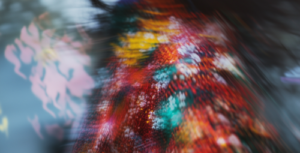22/07/2024
The Court of Appeal (CoA) has now issued its eagerly anticipated judgment in respect of an appeal filed by the United Kingdom Intellectual Property Office (UKIPO) following a remarkable High Court judgment that paved the way for the UKIPO to adjust its approach to dealing with patent applications with claims that specifically relate to artificial neural networks (ANNs).
As a result of the High Court (HC) judgment, the UKIPO was obliged to update its guidelines for examining patent applications that relate to artificial intelligence (AI) to specify that UK patent examiners should not object to inventions involving (specifically) ANNs under the “program for a computer” exclusion.
The CoA judgment means that the UKIPO’s original decision that rejected the patent application filed by Emotional Perception AI Limited (‘EPL’) is considered to be correct and will allow the UKIPO to revert to its previously understood approach for examining patent applications with claims that specifically refer to ANNs.
The CoA judgment addresses the following grounds of appeal:
i) Ground 1: the Judge erred in holding that the exclusion from patent protection for “a program for a computer … as such” was not engaged;
ii) Ground 2: the Judge was wrong to rely on the Appellant’s ‘concession’ that a hardware ANN was a computer but it was a computer with no program, or words to that effect;
iii) Ground 3: the Judge was wrong to exclude the consideration of the mathematical model exclusion; and
iv) Ground 4: the Judge was wrong to hold that the claimed invention involves a substantive technical contribution.
These grounds have been discussed in our previous article and another article that provides an overview of the arguments made during the CoA hearing.
Grounds 1 and 2 are particularly interesting because if the CoA agreed with the HC judge, this would transform the UKIPO’s approach to examining patent applications with claims that specifically relate to ANNs.
Grounds 1 and 2 are summarised by the CoA as representing a first question that asks “what a computer program is” and “whether there is a computer program in an ANN”.
The CoA judgment acknowledges that an ANN is unlike a conventional computer. It is therefore unsurprising that there has been so much debate on the first question during the CoA hearing. Dictionary definitions of what is a “computer program” and the fact that an ANN provides fundamentally different approach to traditional computing programming highlights the challenge of answering the first question. This point is emphasised by respondent’s (EPL) skeleton argument, which is quoted in the CoA judgment, of how “[t]he core utility of ANNs… lies in their ability to address problems which would be intractable to computer programming… there may be enormous insight in how the training objectives and the training data are used to cause the ANN in question to evolve during training; but even then the computer scientist does not know in advance what structure the ANN will adopt nor what patterns and relationships the ANN will ultimately pick up in the data, and indeed it is normally impossible even once the ANN is trained to understand how it is approaching the problem in question to produce the answers given”.
As part of the assessment, the CoA has developed some definitions as follows:
“… a computer is a machine which processes information”.
“… a computer program is a set of instructions for a computer to do something”.
Although EPL submitted arguments to limit these definitions in terms of the involvement of a human computer programmer, the CoA considers that “there is no justification for drawing a distinction in law between instructions created by a computer and those created by a human”. The CoA did not accept that it is helpful to focus on the characteristics of the problem the programmer wants to solve. Instead, the CoA considers that “[t]he fact that ANNs aim to solve problems which are not easy to solve with conventional computers is irrelevant”.
Based on the definitions adopted by the CoA and the above analysis, it is unsurprising that the CoA considers that the weights of a trained ANN (whether implemented in hardware or software) are a computer program. The CoA highlighted how their assessment of ANNs is consistent with the Technical Boards of Appeal of the European Patent Office, pointing to a particular decision that “[a] neural network relates to both programs for computers and to mathematical methods”.
The CoA judgment means that the exclusion from patentability of a program for a computer as such will be engaged for EPL’s patent application. The exclusion applies whether the ANN is implemented as hardware or software.
Ground 4 (the Judge was wrong to hold that the claimed invention involves a substantive technical contribution) forms a second question addressed by the CoA. The CoA makes the important point that the fact that the exclusion is engaged for an ANN-based invention does not mean that the invention is unpatentable. In fact, the CoA judgment specifies that an ANN-based invention is not in any worse position than other computer implemented inventions, which can be patented in the UK. However, in contrast to the situation after the HC judgment, an ANN-based invention is no longer in a better position than other computer implemented inventions.
What is important is to look at the contribution made by the invention (i.e., step 2 of Aerotel/Macrossan). The contribution made by EPL’s invention was not in dispute and can be summarised as follows:
“…the invention of the Application is an ANN-based system for providing improved file recommendations. The invention may be hardware or software implemented. The fundamental insight is in the training of the ANN which analyses the physical properties of the file by pairwise comparisons of training files. In these pairwise comparisons the distance in property space between the output (property) vectors of the ANN is converged to reflect the differences in semantic space between the semantic vectors of each pair of files. The result is that in the trained ANN, files clustered close together in property space will in fact have similar semantic characteristics, and those far apart in property space will have dissimilar semantic characteristics. Once trained the trained ANN can then be used to identify, swiftly and accurately, files from a database which correspond semantically to a target file, and to provide – against [sic] swiftly and accurately – file recommendations to a user device (over a communication network)”.
Although the training of the ANN is considered to be an important part of the technique that forms part of the creation of the program, the CoA did not consider the training aspect to make any difference to the analysis of patentability. That said, a trained ANN is distinct from an untrained ANN by virtue of the set of weights and biases arrived at after the training phase. It therefore makes sense that a claim that involves an ANN needs to refer to a trained ANN in order to realise the stated advantages.
Sending a recommended file to a user is identified by the CoA as being the only part of the contribution that does not consist of a program for a computer. Such a recommendation message is considered by the CoA to be a presentation of information (which is unpatentable unless it provides a technical contribution). The “sending” of the file itself does not help because this is nothing more than standard transmission in a network.
The CoA agrees with the UKIPO’s original decision for this particular case and explains that “[w]hat makes the recommended file worth recommending are its semantic qualities. This is a matter of aesthetics or, in the language used by the Hearing Officer, they are subjective and cognitive in nature. They are not technical and do not turn this into a system which produces a technical effect outside the excluded subject matter”.
The CoA succinctly sets out its conclusion for this case as follows:
“It is the semantic similarity of the files here which gives rise to their recommendation but that is not a technical matter at all. Putting it another way the similarity or difference between the two files is semantic in nature and not technical. I agree with the Hearing Officer that the similarity between this case and the one addressed by Floyd J in Protecting Kids is superficial only and also that no useful analogy can be drawn from the patent in Gemstar which was held not to be excluded. The fact that in the present case there is what one might call an external transfer of data (the file recommendation) does not help for the same reason. What matters is the correct characterisation of the data being transferred and that brings the issue back to the aesthetic and therefore non-technical quality of this aspect of the contribution”.
This means that Ground 4 is successful and the original decision of the UKIPO is upheld. EPL’s application is excluded from patentability under UK law.
Ground 3 (the mathematical method exclusion) is not directly considered given that the appeal on Ground 4 has been allowed. However, the CoA judgment indicates that the mathematical method exclusion could also be relevant to ANN-based inventions.
Lady Justice Nicola Davies and Lord Justices Arnold and Birss were unanimous in their decision.
Conclusion
The UKIPO will likely now revise their guidelines in light of the CoA judgment. It can be expected that UK examiners will be instructed to examine claims that refer to ANNs in the same way as any other computer implemented invention. That is, to follow the Aerotel/Macrosson approach with reference to the so-called AT&T signposts. In practice, this means that there must be some technical contribution in order to avoid the program for a computer as such exclusion.
Based on the established case law in the UK, the CoA decided that this particular invention did not make a technical contribution. ANNs, like any other computer implemented invention, are patentable in the UK if, and only if, they make a technical contribution
This article is for general information only. Its content is not a statement of the law on any subject and does not constitute advice. Please contact Reddie & Grose LLP for advice before taking any action in reliance on it.



